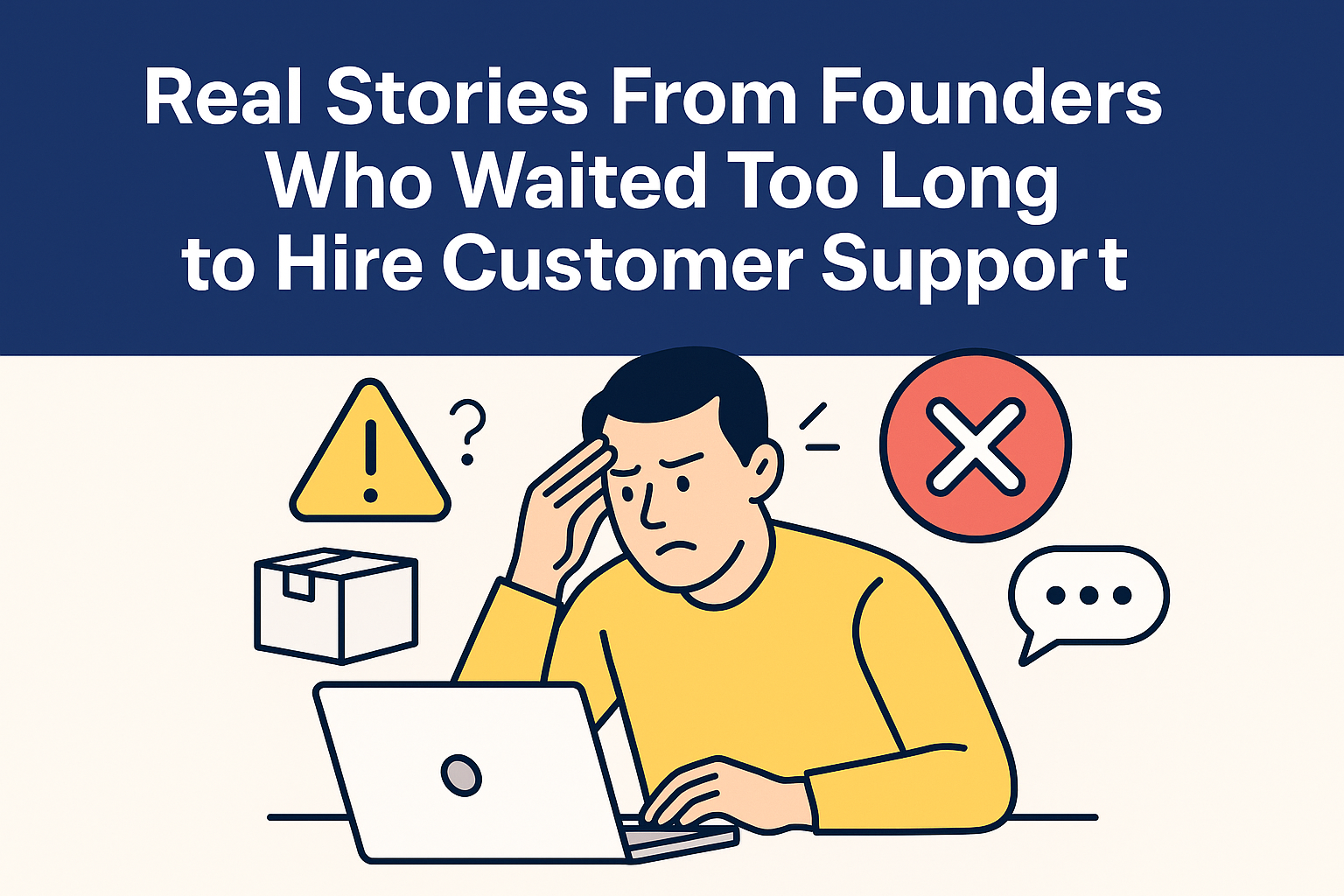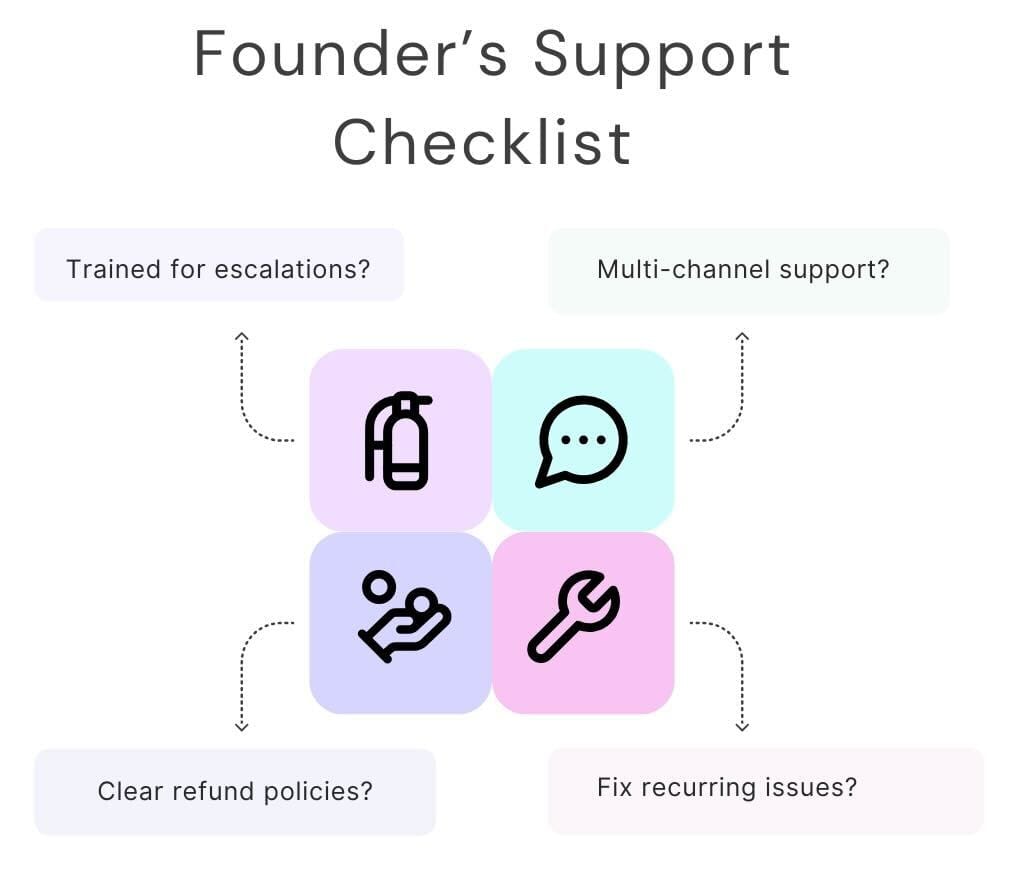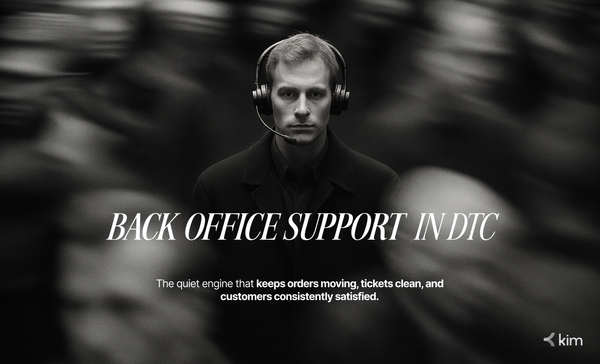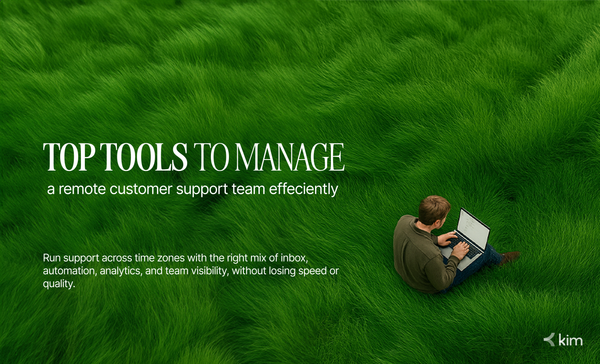Real Stories From Founders Who Waited Too Long to Hire Customer Support
You can build the sleekest product, the flashiest ad campaign, and the most viral brand, but if your customer support is broken, it will catch up with you.
And when it does, it’s not just about fixing tickets.
It’s about losing trust, sales, and sometimes the entire business.

Let’s look at 3 real companies, Fashion Nova, Homejoy, and Magic, whose founders learned the hard way what happens when you delay investing in support. Then, we’ll break down what you can do differently before the same happens to you.
1. Fashion Nova
The Brand That Won Instagram, but Lost the Inbox
Fashion Nova’s rise was legendary. It dominated fast fashion on Instagram, launched viral collections, and turned influencer marketing into a growth engine.
But while the brand scaled lightning-fast on the outside, behind the scenes, things were breaking, especially in customer service.
The problem
- Orders lost. Refunds denied. No one replying.
- Thousands of customers reported missing items and delayed deliveries.
- The only way to reach customer support? A generic form or a long wait for email.
Reddit threads and YouTube rants told the same story: people begging for refunds, resorting to filing disputes with their banks just to get a response. The Better Business Bureau slapped Fashion Nova with an "F" rating.
And then came the real blow: the Federal Trade Commission fined Fashion Nova $4.2 million for failing to refund customers whose orders were never delivered.
The opportunity they missed
- Hire support staff before scaling marketing.
- Give real refunds, not just store credit.
- Offer multiple ways to reach out - chat, phone, even social DMs.
- Use support data to fix recurring issues with shipping and inventory.
Fashion Nova still thrives, but not without battle scars, and a hard-earned lesson on why flashy branding can’t replace responsive customer care.
2. Homejoy
When Rapid Growth Cleans You Out
Founded in 2010, Homejoy was the Uber for house cleaning, growing to 30+ cities and backed by Google Ventures. But behind the boom, customers were quietly leaving.
And the problem wasn’t product. It was support.
The problem
- Bookings were made, but cleaners didn’t show.
- No customer service agent to call.
- Emails went unanswered for days.
They tried cutting costs by limiting phone support, even after their team warned them not to. Reviews tanked, and customer churn shot up.
Even when they brought in Kim Spalding (ex-Starbucks), it was too late. The trust was gone. In 2015, Homejoy had to shut down operations.
What could have changed the outcome
- City-level support teams that knew local cleaners and customer patterns.
- Live phone or chat agents to solve time-sensitive issues.
- Automated follow-ups for missed bookings and review requests.
- Listening to their own support team before customers left.
Homejoy didn’t fail because no one wanted cleaning services. They failed because the people who did couldn’t trust they'd be heard.
3. Magic
The Startup That Promised Anything, and Delivered Silence
Magic went viral for one bold pitch: text us anything, and we’ll make it happen. A burrito at 2 a.m.? Done. Flights to Tokyo? Easy.
At least, that’s what the launch promised.
The problem
- Orders came in fast, but backend ops didn’t.
- No real system to handle refunds.
- No agents trained to manage complaints or delays.
People were charged but received nothing. A user ordered cookies, paid, and… nothing. No order. No refund. No reply.
Magic had a brilliant idea, but they launched without a solid customer service backbone. What should have been “magical” felt like a disappearing act.
What they needed
- Tiered service delivery based on bandwidth.
- Clear disclaimers on what they can’t do.
- A trained customer experience team to manage volume.
- Structured systems to issue refunds, confirm deliveries, and close the loop.
Magic’s case shows what happens when virality isn’t matched by operational readiness.
Spot the Pattern
When you break these stories down, a pattern emerges. The support problems weren’t bugs. They were strategic blind spots.
| Mistake | What Happened | What Should've Happened |
|---|---|---|
| Growing too fast | Companies launched marketing and product before setting up support | Support hires should happen before scale, not after |
| One-way communication | Email-only contact. No live support. Slow replies. | Multi-channel support: live chat, social DMs, phone |
| Refund friction | Delays, store credits, or no refunds | Instant refunds or transparent policies |
| Ignoring red flags | Poor reviews, churn, internal team feedback | Early signals should trigger support scaling |
If You’re a Founder, Here’s Your Checklist
Before you launch your next campaign or drop that new product line, ask yourself:
1) Can customers reach you across multiple channels?
2) Do you have someone trained to handle escalations or urgent issues?
3) Are your refund and return policies crystal clear and easy to execute?
4) Do you have systems to spot recurring problems and fix them?

If the answer is no, you’re not ready to grow.
Because when something breaks, and it will, you can’t just say “sorry” and move on. You need a team ready to catch the fallout.
So, When Should You Hire Customer Support?
- When your inbox starts piling up, don’t wait, that’s already too late.
- Hire at least one dedicated rep when you see consistent sales.
- Automate what you can (FAQs, order tracking), but never hide behind bots.
- Make sure support is tied into your growth, marketing, and ops teams, not left out of the loop.
Don’t Wait for a PR Disaster
Fashion Nova had to deal with FTC fines.
Homejoy had to shut down entirely.
Magic lost trust it couldn’t earn back.
None of them failed because their product wasn't good enough.
They failed because they didn’t take support seriously, until it was too late.
Don’t make the same mistake.
Final Word
Your customer support is not just a cost center. It’s a revenue protector, a brand builder, and your first line of defense when things go wrong.
Hire your support team before you go viral (for wrong reasons).
Build systems before launch day.
Treat your customers like they matter, before they have to tweet about it.
Don’t wait for a PR nightmare, fix your support now.
👉 kim.cc




